PRACTICAL STEPS FOR FIGHTING THE RIGHT DIET FIGHT
We get it. People are unhealthy and the primary reason is that we eat terribly — too much of the wrong stuff and too little of the right.
Bashing the current food system does a lot of things: it brings awareness to the issue, it empowers people to have a say in the matter, it’s pretty funny if you do it right, and it makes me feel better for having taken a stand against something I feel is harmful. But I’m not blind to one of the largest issues that threaten the success of this blog and the health of its readers: too many people depend on the Megatron that is the industrialized food system to simply kick poor eating habits cold turkey. In addition to offering my insight into the wrongs of the way you’re currently being fed/feeding yourself, I also want to offer relatable, reliable advice on how to begin the transformation from a feeble Shia LaBeouf of planet Clueless to the badass Optimus Prime of WholeFoodsium. But just as a hobbled athlete should carefully follow the instructions of their physical therapist for rehabilitating a broken leg, so should you treat your nutritional malady. Wheelchair to full sprint won’t work for LeBron James, and it won’t work for you.
It has been proven time and again that skipping the proper rehab in this healing scenario is a recipe for failure. By subtracting just a few unhealthy food options or habits and replacing them with more beneficial alternatives, the road to health will seem less like a distant planet than ever before. There are a lot of reasons for this. To keep it short and sweet – for lack of a better phrase – I’ve offered up just a few of these reasons below:
1.) Keep your brain away from freak out mode:
Eliminating small amounts of those guilt foods at a time allows your brain to avoid freak out mode. Really. This isn’t a joke. Our brains are wired for rewards, and the perfectly balanced combo of sugar/salt/fat in your average Little Debbie Cake* puts your brain in the same mode as sexual pleasure [1]. Here, you can clearly see why you aren’t just fighting a craving when that itch to chow down on junk food strikes; you’re fighting physiology. I know what you’re thinking: damn, these scientists are doing it right!
*Ok, so it's like having an orgasm, and it's like an instant antidepressant. So, that's pretty much exactly how I looked at them to begin with and I'll probably continue to eat them impulsively for those very reasons. I’m still human.
2.) Help kickstart your metabolism:
Your body’s engine didn’t get to its current stagnant state in one day. It won’t turn that around in one day either. Going gung-ho from the start gun will most likely lead to the following scenario: you eat kale/basil salads with pine tar dressing for two weeks straight, you’re totally miserable because of the situation described in point #1 above and, despite all your effort, you’ve gained weight. That’s right, GAINED WEIGHT! What? How could this be? Well, for one, there is a far deeper mind/body connection going on than most people realize. When your mind is depressed because you haven’t been doping up on Little Debbie, your body responds by working less efficiently, which affects your dietary efforts because of decreased metabolism. This is a complicated matter to be sure, but I bet many of you previous diet adventurers have firsthand knowledge of this phenomenon. Now you know why it happens.
3.) Slow and steady wins the race, and not just when you’re racing a hare:
We’ve seen from 1.) and 2.) that a few replacements at a time is most likely the right prescription for your diet dilemma. Number 3.) is less about science and more about balance. Taking on any monumental change can seem a lot like...well, a lot like knocking down a damn mountain. Chipping away one or two pick swings at a time is the only way to go. I know the metaphor seems like a stretch, but it is so true. Treating this positive lifestyle change like a sprint will leave you exhausted on the trail before you’re fully prepared. Marathoners train for months to run 26.2 miles, composers craft their art for years before The Metropolitan Opera House calls, and you should treat this transformation with the same diligence and patience. You’re painting a masterpiece, not a hopscotch board in sidewalk chalk.
Now with these three simple strategies in mind, let’s have a look at a few diet swaps you can pull off to get the healthy party started.
Bashing the current food system does a lot of things: it brings awareness to the issue, it empowers people to have a say in the matter, it’s pretty funny if you do it right, and it makes me feel better for having taken a stand against something I feel is harmful. But I’m not blind to one of the largest issues that threaten the success of this blog and the health of its readers: too many people depend on the Megatron that is the industrialized food system to simply kick poor eating habits cold turkey. In addition to offering my insight into the wrongs of the way you’re currently being fed/feeding yourself, I also want to offer relatable, reliable advice on how to begin the transformation from a feeble Shia LaBeouf of planet Clueless to the badass Optimus Prime of WholeFoodsium. But just as a hobbled athlete should carefully follow the instructions of their physical therapist for rehabilitating a broken leg, so should you treat your nutritional malady. Wheelchair to full sprint won’t work for LeBron James, and it won’t work for you.
It has been proven time and again that skipping the proper rehab in this healing scenario is a recipe for failure. By subtracting just a few unhealthy food options or habits and replacing them with more beneficial alternatives, the road to health will seem less like a distant planet than ever before. There are a lot of reasons for this. To keep it short and sweet – for lack of a better phrase – I’ve offered up just a few of these reasons below:
1.) Keep your brain away from freak out mode:
Eliminating small amounts of those guilt foods at a time allows your brain to avoid freak out mode. Really. This isn’t a joke. Our brains are wired for rewards, and the perfectly balanced combo of sugar/salt/fat in your average Little Debbie Cake* puts your brain in the same mode as sexual pleasure [1]. Here, you can clearly see why you aren’t just fighting a craving when that itch to chow down on junk food strikes; you’re fighting physiology. I know what you’re thinking: damn, these scientists are doing it right!
*Ok, so it's like having an orgasm, and it's like an instant antidepressant. So, that's pretty much exactly how I looked at them to begin with and I'll probably continue to eat them impulsively for those very reasons. I’m still human.
2.) Help kickstart your metabolism:
Your body’s engine didn’t get to its current stagnant state in one day. It won’t turn that around in one day either. Going gung-ho from the start gun will most likely lead to the following scenario: you eat kale/basil salads with pine tar dressing for two weeks straight, you’re totally miserable because of the situation described in point #1 above and, despite all your effort, you’ve gained weight. That’s right, GAINED WEIGHT! What? How could this be? Well, for one, there is a far deeper mind/body connection going on than most people realize. When your mind is depressed because you haven’t been doping up on Little Debbie, your body responds by working less efficiently, which affects your dietary efforts because of decreased metabolism. This is a complicated matter to be sure, but I bet many of you previous diet adventurers have firsthand knowledge of this phenomenon. Now you know why it happens.
3.) Slow and steady wins the race, and not just when you’re racing a hare:
We’ve seen from 1.) and 2.) that a few replacements at a time is most likely the right prescription for your diet dilemma. Number 3.) is less about science and more about balance. Taking on any monumental change can seem a lot like...well, a lot like knocking down a damn mountain. Chipping away one or two pick swings at a time is the only way to go. I know the metaphor seems like a stretch, but it is so true. Treating this positive lifestyle change like a sprint will leave you exhausted on the trail before you’re fully prepared. Marathoners train for months to run 26.2 miles, composers craft their art for years before The Metropolitan Opera House calls, and you should treat this transformation with the same diligence and patience. You’re painting a masterpiece, not a hopscotch board in sidewalk chalk.
Now with these three simple strategies in mind, let’s have a look at a few diet swaps you can pull off to get the healthy party started.
● Kale yea! Eat this rough SOB instead of iceberg, romaine, or spinach for your next salad. Yes, this means you have to eat salad.
As a general rule of thumb, the darker the green of your vegetable, the more nutritious – see beta carotene content if you want to get real food boner going [2]. This means that by using nothing more than your eyes at the grocery store, a sense that marketers have abused for many years in the packaged sections, you can actually see the healthiest items in the produce section.
● Sweet, yes, SWEET Potatoes. Eat this gnarly tuber instead of white or red potatoes the next time you’re throwing down a mash or veggie roast.
Fooled ya, sucka. They aren’t actually all that sweet as compared to the aforementioned snack cakes we adore. They are healthy, though. Sweet potatoes have the highest % content of the powerful antioxidant beta carotene versus any other food. Additionally, the glycemic index (GI) of sweet potatoes - which in laymen’s terms is a measure of how foods affect your blood sugar - is about half that of the white alternative.
● 100% whole grain wheat bread. I almost don’t know where to start.
WE. EAT. WAY. TOO. MUCH. BREAD. That is a fact. Another fact is that we eat way too much stuff that wants to be bread but is more of a toy soldier hiding in your cupboard than an Army Ranger on the battlefield. If you've checked out the ingredient list on your average loaf of Nature’s Own or Wonder Bread lately, you’ll know exactly what I’m talking about. Here is a recipe for bread that I've used myself and know tastes great [3]: 1 1/2 cups water, 4 cups flour, 1 1/2 tsp of salt and 2 1/2 tsp dry yeast. That is all. So if that is all that it takes to make your own bread, then you might be asking yourself why in the hell your bread has so much other shit in there? Great question. It has so much ‘other shit’ in there because those chemicals are necessary for large food manufacturers to process, store, leaven, package, maintain, and price model the bread that you consume. These scientific formulas allow for more predictable outcomes. And for those financiers out there reading this, you guessed it right, more predictable outcomes lead to higher profits. Long story short: eat less bread no matter what, and make sure that you’re actually eating bread instead of a chemistry set the next time you do choose to indulge.
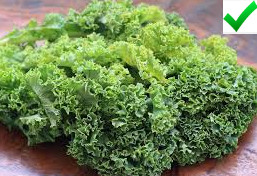
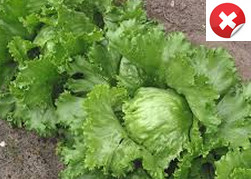
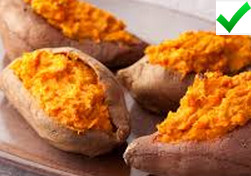
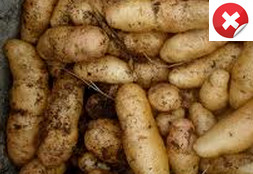
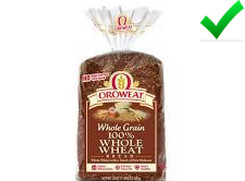
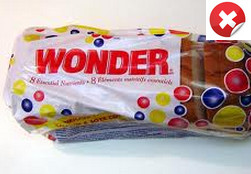

 RSS Feed
RSS Feed
